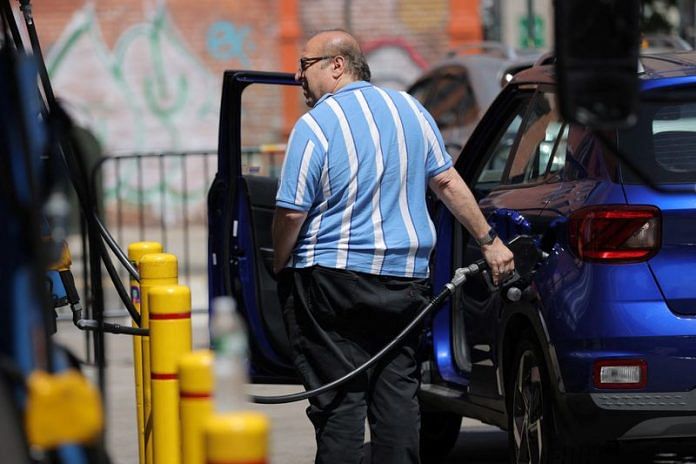By Emily Chow and Trixie Yap
SINGAPORE (Reuters) -Oil prices gained on Tuesday following a more than 1% drop the previous session as escalating geopolitical tensions in major producing region the Middle East fuelled supply concerns.
Brent crude futures rose 7 cents, or 0.07%, to $82.46 a barrel by 0734 GMT. U.S. West Texas Intermediate crude was up 15 cents, or 0.31%, at $76.93 a barrel.
Both the contracts fell over $1 on Monday as a deepening real estate crisis fuelled worries about demand from China, the world’s biggest crude consumer, after a Hong Kong court ordered the liquidation of property giant China Evergrande Group.
“Oil price trading above US$80/bbl is pricing in some geopolitical risk premium again as flare ups continue in the Middle East region. This could fade out within a week or two if there is no strong reaction from the US,” said DBS Bank’s energy sector team lead Suvro Sarkar.
“If it does worsen into a US-Iran standoff and stricter sanctions, then we are looking at US$80-100/bbl range for oil to sustain for some time,” he added.
Washington vowed to take “all necessary actions” to defend its troops following a deadly drone attack in Jordan by Iran-backed militants, the first U.S. military deaths since the Israel-Gaza war began, putting markets on edge.
“If U.S.-Iran tensions escalate, particularly through a direct confrontation, the risk rises that Iran’s oil supply is adversely impacted. Iranian’s oil exports are likely the most vulnerable via potentially greater enforcement of sanctions,” said Commonwealth Bank of Australia analyst Vivek Dhar in a note.
Iran exported 1.2-1.6 million barrels per day of crude oil through most of 2023, Dhar added, representing 1-1.5% of global oil supply.
Limiting the gains, however, were concerns about the outlook for China’s economy, and any potential fall out from Evergrande’s liquidation order, analysts said.
The liquidation order may “trigger negative ramifications” in the stock and property markets, which in turn could deepen deflationary risks in China, dampening the demand outlook for oil, said OANDA senior market analyst Kelvin Wong.
On the supply side, while an OPEC+ meeting on Feb. 1 was unlikely to see a decision on the oil policy the group for April, analysts are hoping it could still shed some light on production plans.
The state oil company of the world’s biggest producer Saudi Arabia, in an indication for the future demand outlook, said it had received a directive from the energy ministry to maintain its maximum sustainable capacity at 12 million barrels a day, and not to continue increasing it to 13 million barrels per day.
“We need to see more fundamental factors to stimulate oil prices, otherwise, WTI crude oil may be under (downward) pressure at $80,” said CMC Markets’ Shanghai-based analyst Leon Li.
(Reporting by Emily Chow and Trixie Yap; editing by Miral Fahmy)
Disclaimer: This report is auto generated from the Reuters news service. ThePrint holds no responsibilty for its content.



